A mechanism is any device that transfers force or energy between two points. One simple example is a pair of scissors converting the movement of closing fingers into a shearing force that cuts a material.
While traditional mechanisms employ multiple movable parts, compliant mechanisms gain mobility from the flexibility of their material rather than from movable joints. For this reason, compliant mechanisms are usually made of singular parts, which also means a reduced likelihood of individual component failure.
Since some polymers are flexible materials, it’s only natural that compliant mechanisms would catch on in the 3D printing world. We’ve compiled a list of some of our favorite models that showcase a variety of different approaches. Read on and perhaps make one of these devices for yourself at home!
In order for them to function as intended, it’s important to remember that a properly calibrated 3D printer and appropriate printing materials are required. To set you up for success, we’ve included a few 3D printing tips for each model from users who’ve successfully printed them.
If any of the models pique your interest, but you’re not so keen on dealing with the calibration and material nuances required to pull off a successful print, try Craftcloud by All3DP. In addition to access to a wide selection of materials, you’ll benefit from the professional expertise of our printing partners.
Without further ado, let’s get to our list!
Workshop
To start with, we’ll go over compliant mechanisms that’ll not only show off what the system is all about but that will also be useful in your workshop.
Pliers
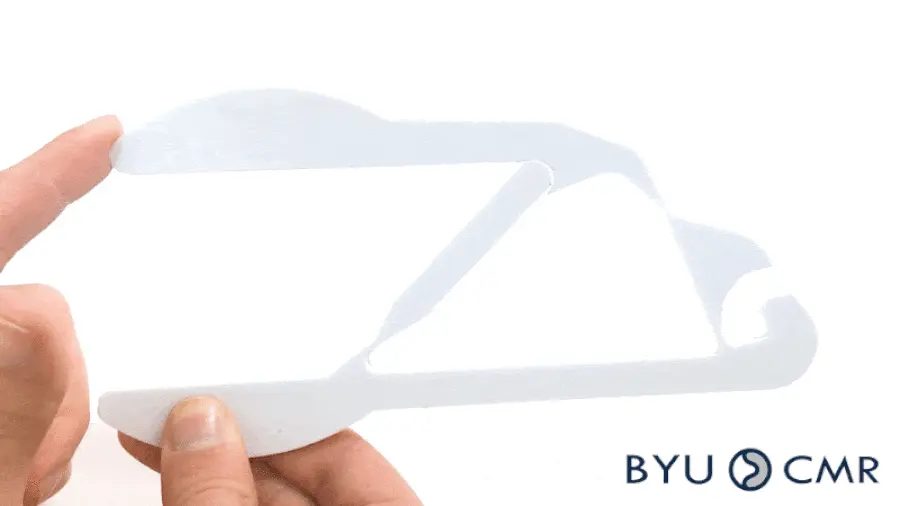
To kick off the list, we have these odd yet cool-looking pliers. They were cleverly designed by Larry Howell from Brigham Young University’s Compliant Mechanisms Research Group (CMR) and are said to be one of the first of their kind. In fact, these pliers are often the image that comes to mind when thinking about 3D printed compliant mechanisms.
While the creators suggest printing in ABS, PLA, TPU, or other flexible filaments, plenty of Thingiverse users report that PLA isn’t the best material because it easily breaks during use.
- Who designed it? BYU_CMR
- How printable/popular is it? 19 people have posted their makes so far, with most choosing PETG over PLA.
- Where to find it? Thingiverse, Cults
Torque Wrench
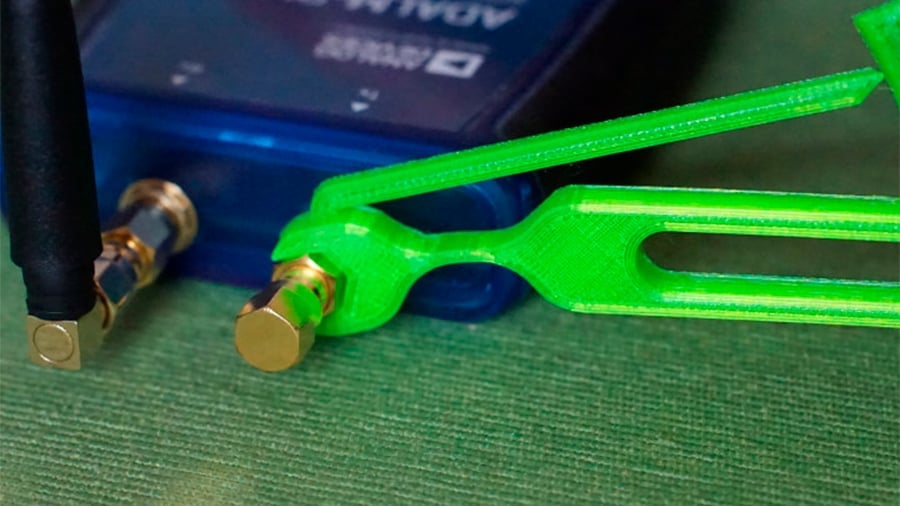
A 3D printed tool as functional as can be, this torque wrench set is the perfect addition to any toolbox. The wrench’s head grips at the screw or nut as the lever is pushed by hand on the other side, a movement only possible due to the material’s flexibility and strength.
According to the creator, the force applied depends on the material, the print settings, and the width of the wrench’s neck – something that he calls the “spring width”. Each wrench comes with three different spring widths: 1.5 mm, 2.0 mm, and 2.5 mm.
KM0 printed the model in PETG with three perimeters and four top and bottom layers for extra rigidity.
- Who designed it? KM0
- How printable/popular is it? No makes have been posted yet, but the creator had good results with PETG.
- Where to find it? MyMiniFactory
Dial-Indicator for Bed Leveling
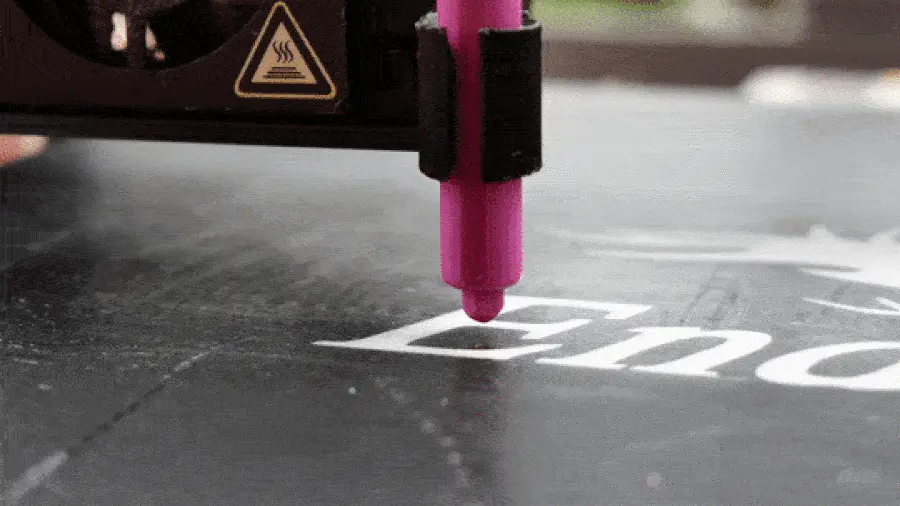
This clever device was designed by creator SunShine to help people struggling with FDM bed leveling. SunShine explains in his detailed video that compliant mechanisms are useful in this application as there are no moving parts that generate a backlash and, consequently, unprecise movement.
According to the creator, the dial-indicator is sensitive enough to measure even a 0.25-mm thick piece of paper. Once attached to the hot end carriage, it should be able to properly assess how level the bed is in relation to the nozzle. The model was originally printed in a 0.2-mm layer height with the standard 0.4-mm nozzle and no supports. Information about the material isn’t available, although one of the makes posted has been printed in PLA.
- Who designed it? SunShine
- How printable/popular is it? There are 34 posted makes and 18 remixes, and the files have been downloaded over 22,000 times combined from all different sites.
- Where to find it? Cults, Printables, Thingiverse
Bistable Switch
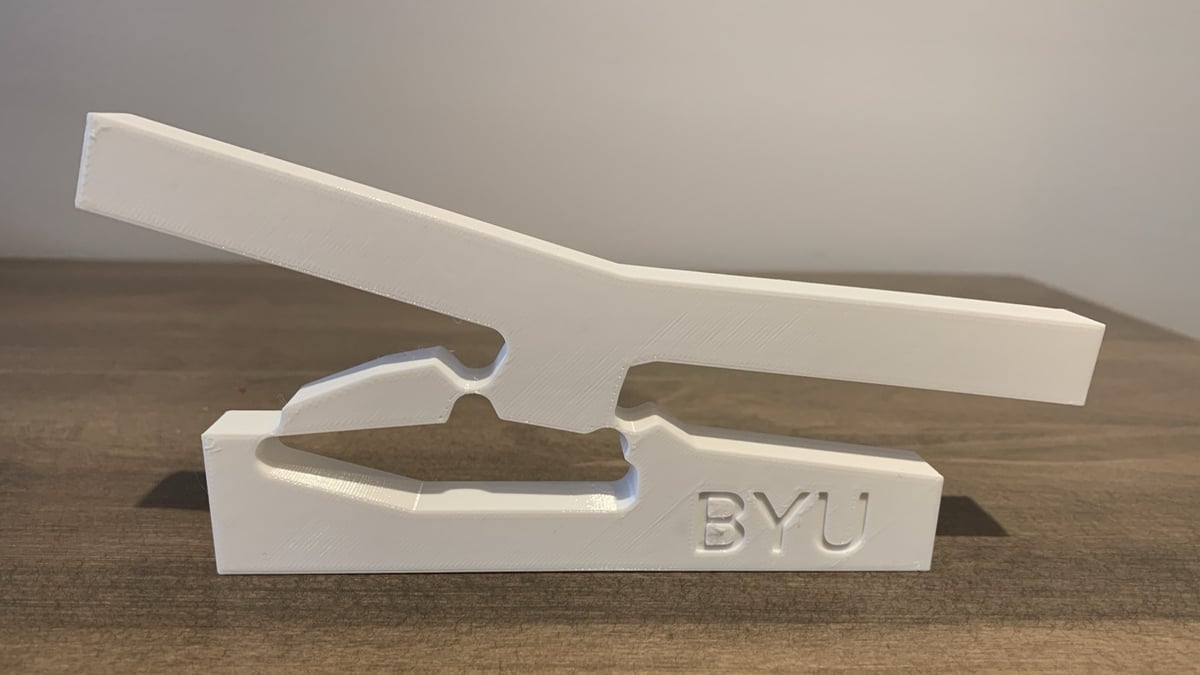
While most compliant devices allow fluid movement, this compliant switch works in two stable equilibrium positions, just like an on and off switch. Pressing the switch feels strangely satisfying, with the potential of it becoming a fidget device.
Depending on your printer’s nozzle size, the creators suggest scaling up the model to allow the smaller arms to be properly built. Printing with PLA is okay, but the device will last for fewer cycles than materials like ABS or PETG.
- Who designed it? BYU_CMR
- How printable/popular is it? A total of six users posted their makes using various materials, including ABS, PETG, and PLA.
- Where to find it? Thingiverse, Cults
Flexing Battery Holders

Thingiverse user enif creates many 3D prints useful for electronic applications. In this case, they have created parametric battery holders for different quantities and standard sizes of cylindrical batteries. As explained by the author, this model aims to hold batteries without the usual metallic spring, which you can use to store batteries.
The point of this model is to firmly hold the batteries, so the creator uses a spring-like geometry that allows the model to stretch slightly. They recommend using ABS to ensure the model flexes the desired 1-2 mm.
Each slot also has holes on each side so you can add electrical wire.
- Who designed it? enif
- How printable/popular is it? 161 people have printed this useful model, while around 310,000 have downloaded the STLs. That’s popular to us!
- Where to find it? Thingiverse
Ratchet Wrench
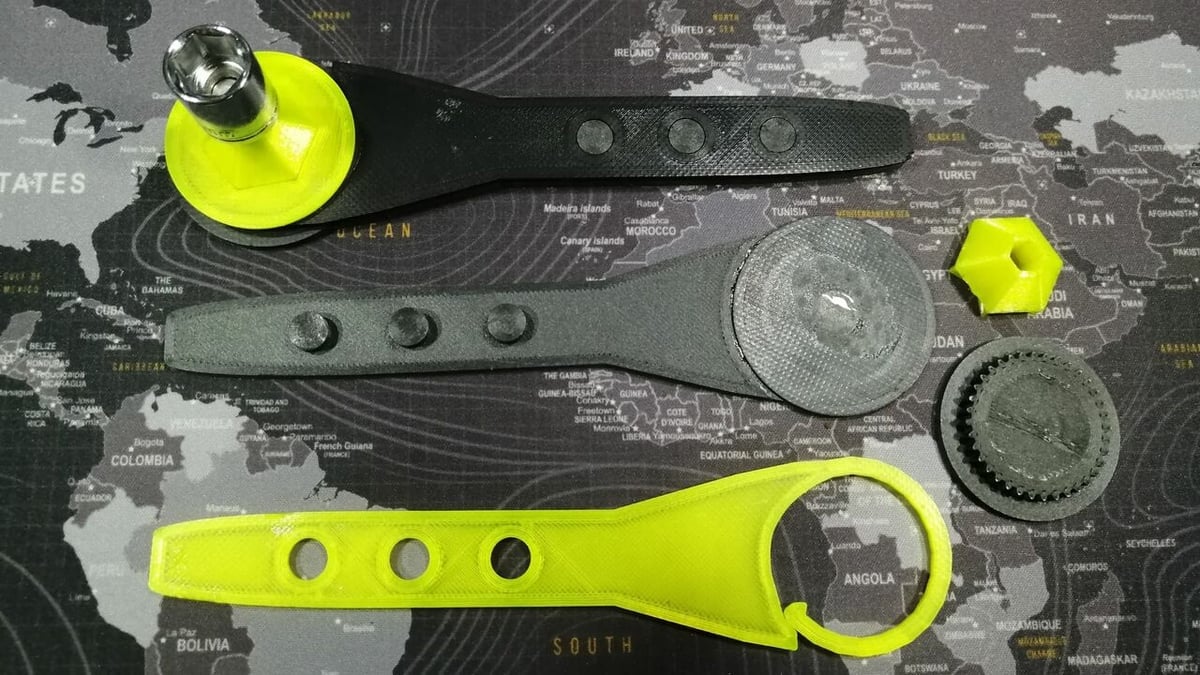
This 3D printable design is a compliant mechanism ratchet set, a perfect example of the versatile applications of compliant mechanisms. This particular model uses the principle of “clicking onto/over the nobs” to create a ratcheting effect, providing a functional and useful tool.
In addition to the 3D printed parts, you’ll need two neodymium magnets and some glue to put everything together.
This compliant mechanism ratchet set offers a practical way to explore the functionality of compliant mechanisms while being functional in other projects!
- Who designed it? Fringemods
- How printable/popular is it? While the design’s been around for a couple of years and has been downloaded around 50 times, its functionality and interactive nature make it a likely favorite among 3D printing enthusiasts and hobbyists.
- Where to find it? Cults
Rod Clasp

This model can be quite useful for those tinkering with their 3D printers. The rod clasp is a quick-release clamping mechanism for metal rods, which are often used as linear guides in fused deposition modeling (FDM) printers. It serves as a base for any DIY projects, such as GMagician’s dial mount.
For this reason, it includes three pre-defined rod sizes (8 mm, 10 mm, and 12 mm), and the model can be further customized in Thingiverse’s Customizer or through any 3D computer-aided design (CAD) program, such as OpenSCAD, as the original file is also provided in the SCAD file format.
- Who designed it? mgx
- How printable/popular is it? While 3 users have posted their makes in PLA, at least 23 others have remixed it, as shown on the different sites.
- Where to find it? Thingiverse, Cults, Printables
Gravity Weighing Scales
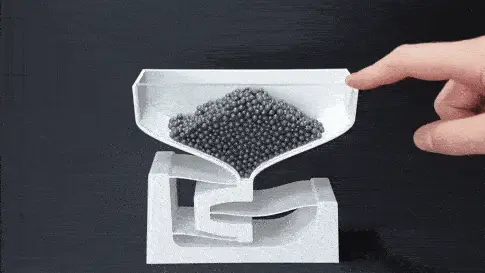
This unique 3D printable model showcases a constant force-compliant mechanism equipped with a reservoir on top. The design cleverly demonstrates gravity compensation through a uniform and pliable structure. By leveraging the power of compliant mechanisms, it can support weight up to a specific limit, allowing it to slowly dip as it’s loaded, and once level, it can easily oscillate.
For those interested in delving deeper into the scientific principles at play, the creator of this design also suggests looking into a comprehensive research paper that details the working of such mechanisms.
Explore the fascinating blend of gravity, weight scales, and compliant mechanisms with this unique model.
- Who designed it? ReinierKuppens
- How printable/popular is it? It’s a relatively new and undiscovered model but due to its intriguing functionality, it has potential to be popular among science and 3D printing enthusiasts alike. Not quite usable as an actual weighing scale though, sadly!
- Where to find it? Thingiverse
Sprung Bolt Lock
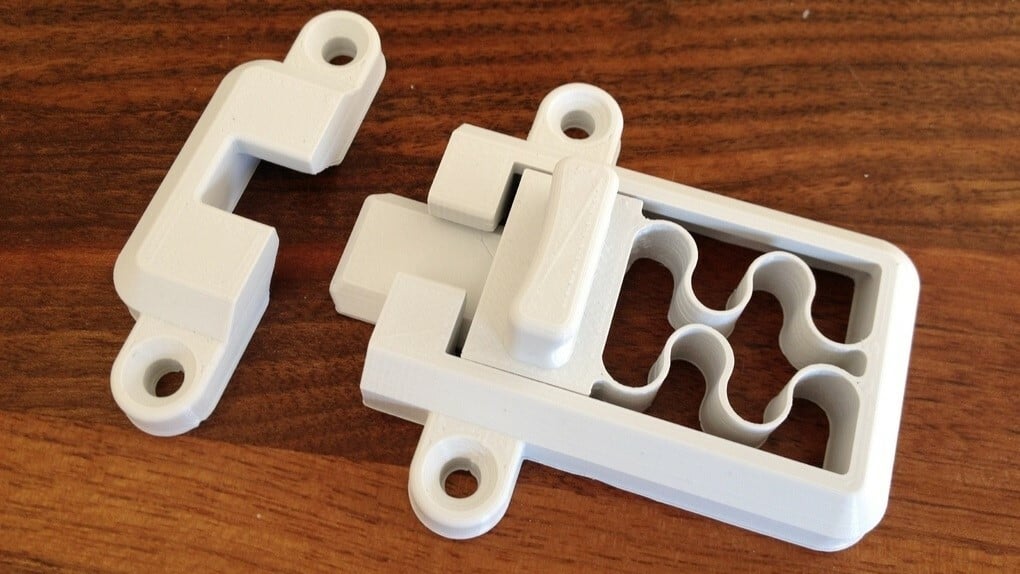
This model is perfect for basic locking needs, with the spring sections giving just the right amount of flex.
Following some hands-on experience, the creator made a few adjustments to improve usability. The internal slope was redesigned to provide more clearance, preventing the bolt from getting stuck when tightened too hard. The bolt’s tip shape was also modified for a more forgiving fit.
The bolt and staple are now separate files for easy printing, and there are two additional variations of the bolt. One variation features a thinner bolt, perfect for the creator’s application, while another offers a fatter bolt for different requirements.
- Who designed it? oidan
- How printable/popular is it? Over 4,100 downloads, 3 makes, and 2 downloads reflect this model’s popularity.
- Where to find it? Thingiverse
Home
Next, we’ll look into useful models that’ll bring some order to your desk, add some ease to your chopstick use, and even keep your toothbrush in place.
Pen
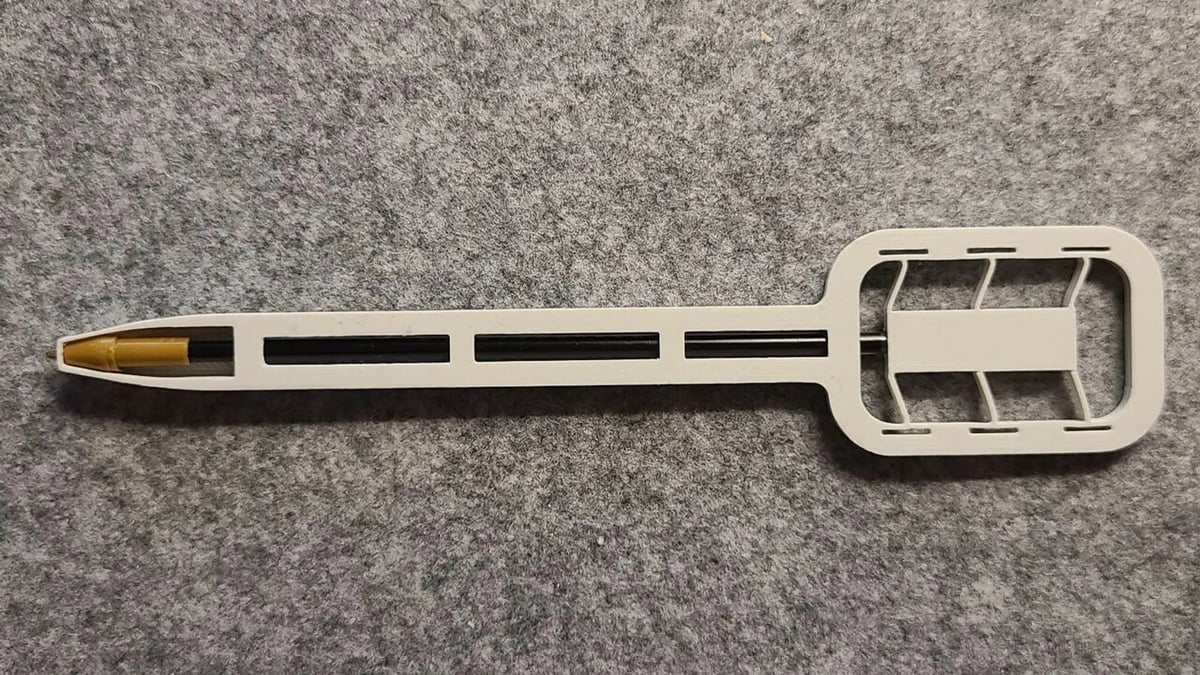
For the fidgeters, the doodlers, and those of us who can never find a pen when we need one, the Ultra Thin Pen Bistable Compliant Mechanism is a dream come true. This 3D printable model lets you create an endless supply of clicky pens, combining functionality with the satisfaction of a good fidget toy.
The magic lies in the rectangle at the pen’s end that attaches to a BIC refill. When you push the rectangle, it moves the refill forward for writing, doodling, or creating anything in any way. The driving part remains steadily in position until moved back, when the refill is safely stored.
Before first use, give the mechanism a go by moving it very slowly to ensure that it won’t snap or fidget, and then adjust the refill’s position by pushing it forward until it touches the 0.5-mm-thick spacer at the front when the mechanism is in use. These simple but necessary tasks should help you verify that the pen will be stable and function as intended.
Craft your personal clickable pen and enjoy a combination of practicality and playfulness in one simple, 3D printed design.
- Who designed it? FabianVeile
- How printable/popular is it? This innovative design has great potential to become popular among office workers, students, and anyone who enjoys a good pen – as seen in the 46 makes shared so far.
- Where to find it? Printables
Clip Stand
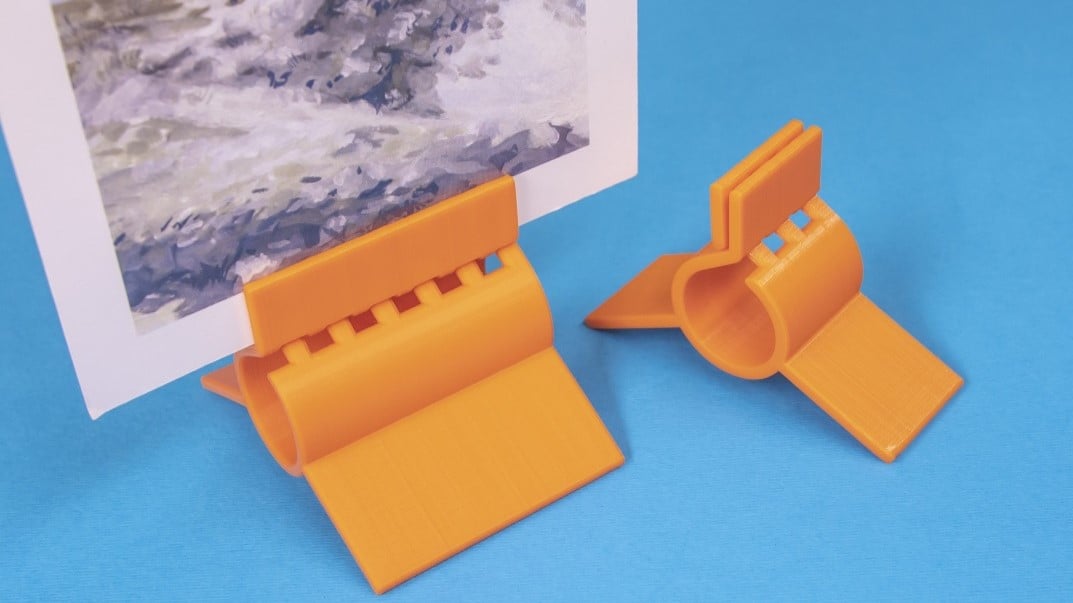
Devin Montes from the YouTube channel Make Anything has also embarked on the compliant mechanism trend inspired by the CMR. One of many different clips designed by Devin, this iteration flexes around itself to open and then clamps on things once released. There are two versions available in different widths: 30 mm and 60 mm.
While originally printed in PLA at 100% infill, Devin claims that this material may lose its clamping strength if left in the open position for too long. For this reason, ABS, ASA, or even PETG can show better results in this matter.
- Who designed it? MakeAnything
- How printable/popular is it? While only a couple of users posted their prints, both made from PLA, the model has over 5,000 downloads.
- Where to find it? MyMiniFactory
Smartphone Mount for Tripod

As we mentioned earlier, simplicity and lower part count are perhaps the biggest advantages of compliant mechanisms. This smartphone mount for tripods is a great example of how a single part can perform just as well as more complex assemblies.
The central ring acts as a spring to clamp and hold the smartphone in place once pressed on by both sides. It comes in three different sizes depending on your phone’s width. In addition, the model includes a small base that can be attached to standard tripod screws.
The creator suggests printing the main part lying down and using support structures While they say they used PETG, they suggest that PLA might also work.
- Who designed it? Meanwhile
- How printable/popular is it? No makes have been posted yet, but the model has been downloaded around 650 times.
- Where to find it? MyMiniFactory
Transforming Chopsticks
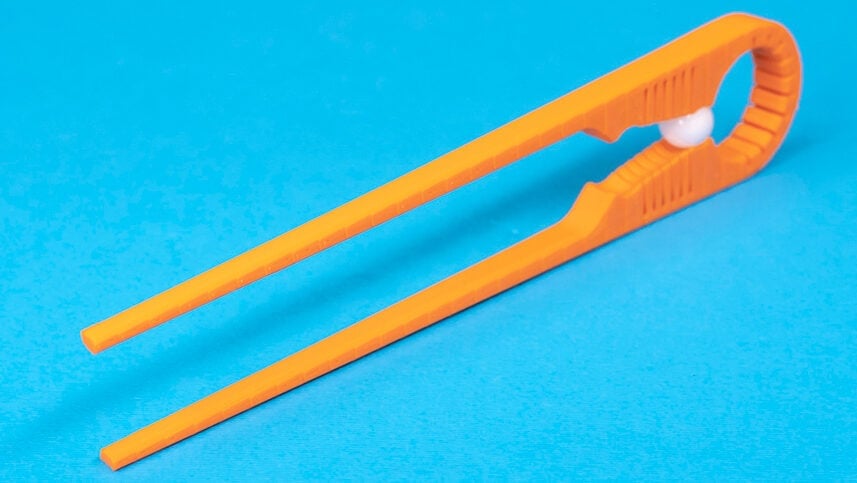
Okay, this isn’t strictly a compliant mechanism, we know. While it does require a small marble to pivot the movement, this model is too awesome to be left out, so please allow us this one small exception.
The way the Transforming Chopsticks work depends on the position where the marble is placed. It can function open (with a marble in the back position) or closed (a marble in the front). The model in the image was printed in PLA (we’d recommend food-safe PLA) with four shells and a 35% infill. A marble with a 14-mm diameter must be acquired separately.
- Who designed it? MakeAnything
- How printable/popular is it? Only one user posted a make (and a break), which was printed in PLA, but with around 3,500 downloads, we’re willing to bet there are a couple of successful models out there.
- Where to find it? MyMiniFactory
Springy Apple Cable Savers

This useful model was created by Thingiverse user muzz64. In typical Apple fashion, Apple charging cords bend and break easily, and this device is designed to prevent that. It uses a spring mechanism to prevent the charging cord from bending at sharp angles, and it uses a slot and the elasticity of the material to ensure a good grip on the charger.
The models available are sized for the device end of the charger and for the USB side of the charger. The creator mentions that the models have custom supports built-in with the model, but you have to check with your own printer if the supports can be printed correctly.
- Who designed it? muzz64
- How printable/popular is it? Around 66 makes have been shared so far on the different sites. The creator recommends using PLA, 3 shell lines of wall thickness, and a high infill percentage.
- Where to find it? Thingiverse, MyMiniFactory, Cults
Simple Clip
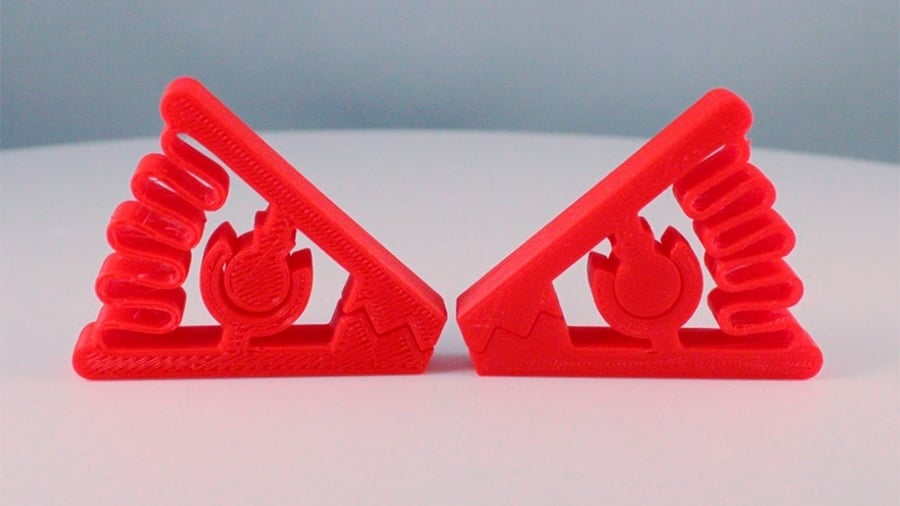
This compliant clip by Cults user ZIndustries seems simple, but it works very well. Compared with MakeAnything’s compliant clip, this model is more versatile and can be used for various applications, including closing a bag of chips and hanging up wet clothing to dry.
Although the creator has printed these clips in different materials, PETG with 15% infill had the best performance.
- Who designed it? ZIndustries
- How printable/popular is it? So far, two users have posted makes, one in ABS, the other in tough PLA.
- Where to find it? Cults
Toothbrush Holder

This ingenious model by Makkuro uses a compliant mechanism to keep your toothbrush in place. Upon pushing the toothbrush into it, the mechanism folds, contracting until it’s stopped by the toothbrush itself.
One of the community makers mentioned that they printed this model in PETG and PLA, but the PETG version didn’t work well because the filament was too flexible.
- Who designed it? Makkuro
- How printable/popular is it? This model has eight makes and there are different versions for different sizes depending on the approximate diameter of your toothbrush stem.
- Where to find it? Printables, Thingiverse
Fun
Last but definitely not least, these mechanisms will be entertaining you for a long time. Even though some aren’t technically toys, we dare you not to become captivated by their movement.
"Wyrd" Elephant
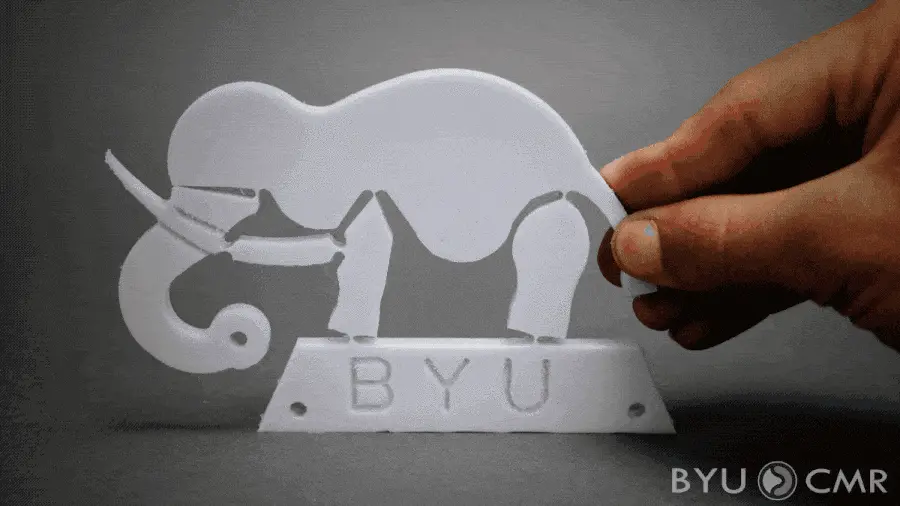
This is another model by CMR, but instead of being a functional mechanism, it’s a fun model that illustrates the capabilities of compliant devices. The “Wyrd” elephant looks cute and all, but pay special attention to the circle at the end of its trunk: It stays fixed in place, rotating only around its axis, while the rest of the assembly rocks back and forth.
Not only does the model show the potential of 3D printed compliant mechanisms, but it also demonstrates the amount of thought required to design such a model. There are two versions available: one for rigid materials such as ABS and PLA and the other for flexible filaments like TPU and polypropylene.
- Who designed it? BYU_CMR
- How printable/popular is it? So far, 23 people have posted successful makes, most of which have been printed in PLA.
- Where to find it? Thingiverse, Cults
Brio Flex Railtrack
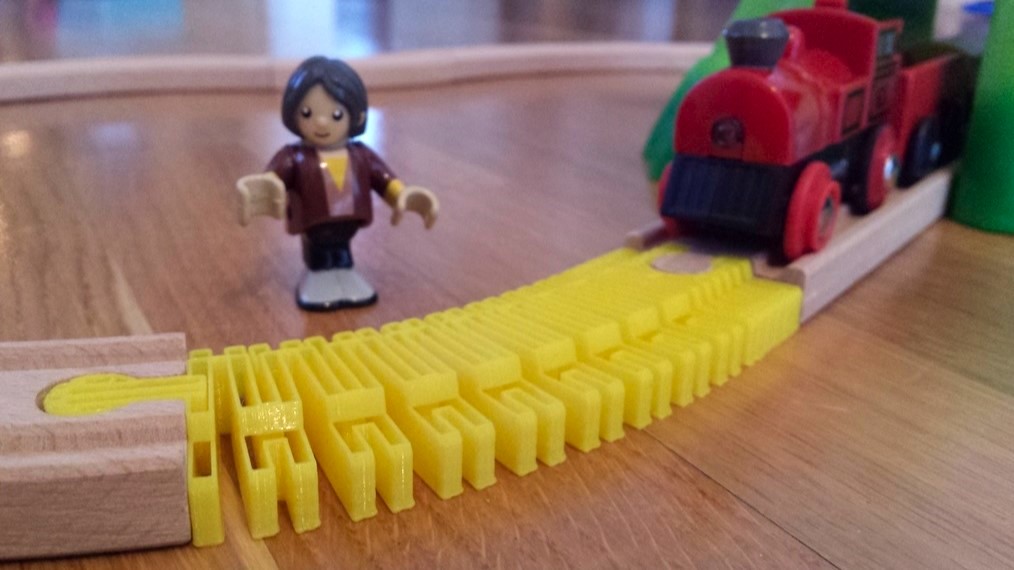
There are many versions of flexible Brio train tracks. However, this version by romanjurt isn’t like other tracks. It can bend sideways as well as upwards and downwards. It uses a pattern that resembles 3D printing supports to ensure the flexibility of the model while keeping the lines close enough and using extra zig-zags so that the train can travel smoothly.
To achieve the result, you have to follow the instructions provided by the author. These are to print with one wall of shell thickness, no infill, and it’s even possible to use the spiralize option in Cura. For more information on how to do this, you can check our article on how to print hollow objects.
- Who designed it? romanjurt
- How printable/popular is it? This model has 24 makes, it needs no supports and it’s pretty fast to print. Some of the makes show greater lengths, so you can adapt it to what your town needs!
- Where to find it? Thingiverse
Iris Mechanism
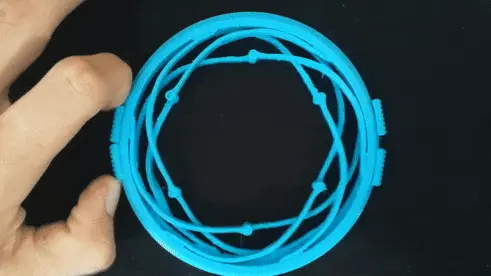
This model is a version of an iris mechanism created by Phyti1. An iris is a diaphragm in which the center opens and closes, whether to serve a function, as with an iris door, or to create interesting shapes, which is the case here.
What’s interesting about this iris mechanism is that it uses the compliant mechanism concept, making this model jointless, relying on the material’s elasticity to bend and return to its original shape.
- Who designed it? Phyti1
- How printable/popular is it? This model has three makes. The creator recommends using a 2-mm wall thickness to ensure it bends better and mentions it can be printed in PLA.
- Where to find it? Thingiverse
Wind-Up Boat

While compliant mechanisms can be cool in their own right, one even cooler thing is a gizmo that uses a compliant mechanism with working gears and propellers to move!
A key highlight of this model is the use of a compliant mechanism, a spiral bevel gear within the redesigned transmission system. This, along with the other gears equipped with counter bearings, minimizes friction and improves efficiency, propelling the boat faster and longer. Or you could look at using Igus filament to minimize friction if you want to avoid bearings.
The boat is assembled using four different screw sizes and M3 nuts. PLA is the recommended print material, although for longevity you may choose to print the springy parts from PETG, which has a bit more bend to it. To ensure seamless gear meshing, the creator even included functional benchmark STLs that should be printed first.
It’s worth noting that, while assembly instructions are in German, a helpful guide can be found in this video.
- Who designed it? GreenDot
- How printable/popular is it? This model is growing in popularity due to its functional and enjoyable nature, and this can be seen in the 115 makes and 6 remixes shared so far on the different sites.
- Where to find it? Thingiverse, Printables, Cults
License: The text of "3D Printed Compliant Mechanisms: 20 Great 3D Models" by All3DP is licensed under a Creative Commons Attribution 4.0 International License.








